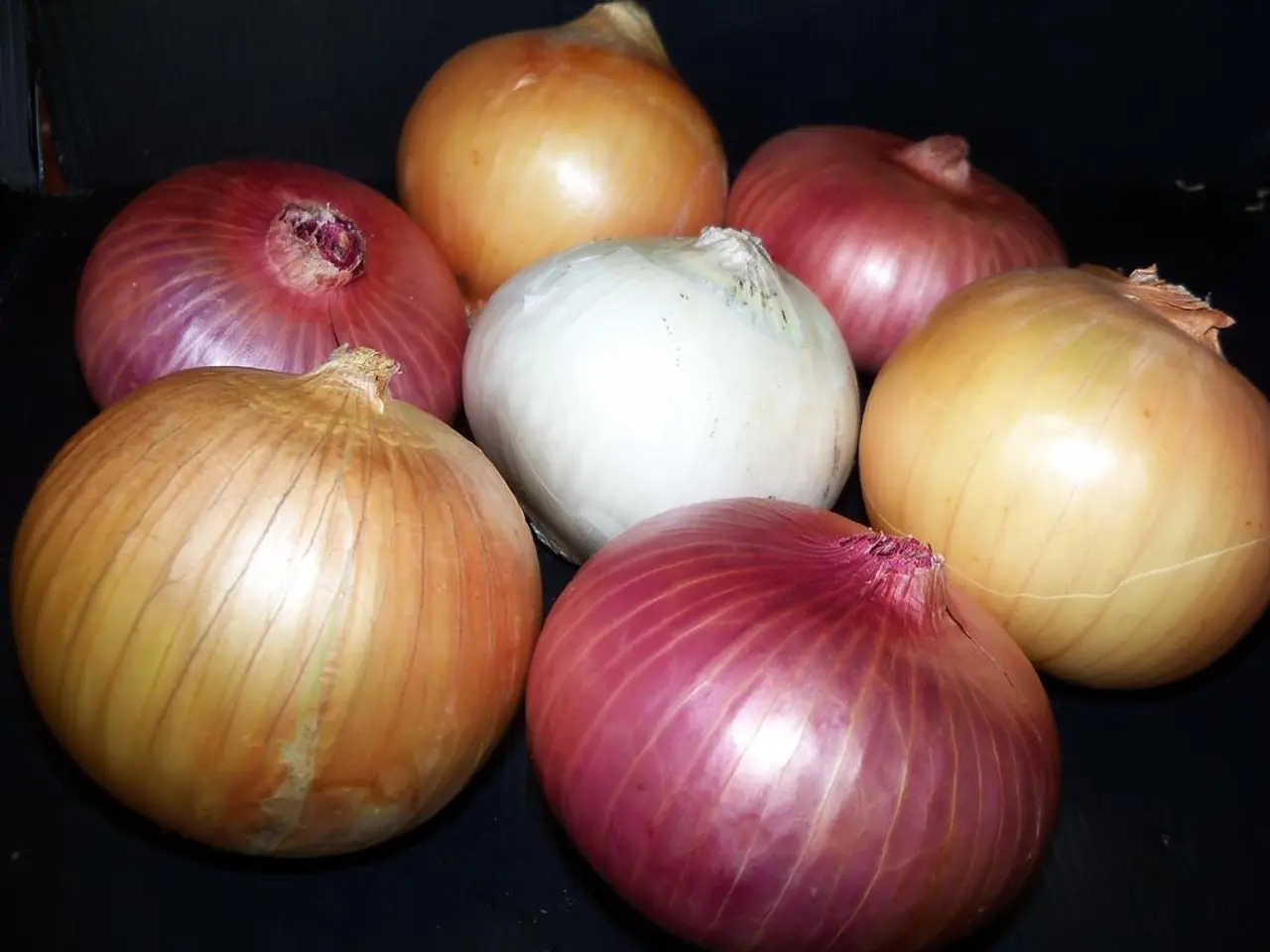Methods for Cultivating Garlic: A Comprehensive Guide
Growing garlic in your garden can be a rewarding experience, as it takes up little space and is easy to cultivate. Here's a comprehensive guide to help you grow garlic successfully in the UK.
Firstly, it's important to know that there are two types of garlic to grow: softneck and hardneck. Softneck garlic, such as the popular Mersley Wight variety, originates from the Isle of Wight and is known for its vigorous growth, large cloves, excellent keeping quality, and adaptability to the UK climate. Hardneck garlic, on the other hand, is generally hardier and better adapted to Northern winters, producing bigger bulbs with fewer but larger cloves, which are preferred for roasting.
When it comes to planting, garlic is best planted in autumn (October–January), allowing the crop to establish before winter. Some varieties like Autumn Early are well-suited to UK cold weather and planting during this period. The cloves should be planted 15cm apart, leaving 30cm between rows, with about 3cm of soil above them. To protect the emerging bulbs from birds, cover the area with netting or horticultural fleece immediately after planting and don't remove it until the young plants are well rooted.
Garlic prefers fertile, well-drained soil rich in nutrients. It requires plenty of nitrogen, phosphorus, and potassium for strong growth and large bulbs. Enrich the soil with organic matter such as compost or well-rotted manure before planting. A soil test is recommended to adjust nutrient levels, especially for phosphorus and potassium.
As the garlic grows, it benefits from good air circulation and should be kept moist but not waterlogged during the growing season. Hardneck garlic does well in cooler settings due to its cold tolerance.
When the leaves turn yellow, it's time to harvest the garlic. Gently lift out bulbs with a fork or trowel, taking care not to damage them. After harvest, garlic bulbs should be dried out for a few weeks by laying them out on a table or on racks, in full sun and out of the rain.
It's essential to be aware of potential diseases that can affect garlic, such as onion white rot and leek rust. Onion white rot is a soil-borne disease that can affect the whole allium family, including onions and leeks. If you notice yellowing, wilting foliage around harvest time, dig up the plant and check for a white fluffy fungus on the base of the bulb, along with tiny black growths. In severe cases, the bulb will be black and rotten. To prevent the spread of this disease, dig up all affected plants and bin or burn them, do not add them to the compost heap. Leek rust is a fungal infection that can affect garlic, especially in wet weather. Orange pustules appear on the leaves in summer, which then begin to die back. The bulbs are safe to eat, but it's a good idea to remove affected foliage or harvest and eat affected bulbs immediately.
Garlic can be grown in containers if you have no space or if your plot has been affected by onion white rot in the past. There are several online stores where you can buy garlic, such as Dobies, Thompson & Morgan, Van Meuwen, Suttons, You Garden, and Sarah Raven.
Remember, it's not recommended to grow garlic from supermarket bulbs as there's a risk of virus infection. Instead, opt for certified seed garlic for healthier plants and larger bulbs.
In summary, Mersley Wight for softneck garlic and hardneck varieties overall are among the best for UK growing conditions, requiring nutrient-rich soil, well-timed autumn planting, and good clove selection for optimal results. Happy gardening!
Including raised beds in your home-and-garden is a practical solution for expanding your gardening lifestyle, as it allows for optimal soil conditions and easier maintenance. For those contemplating growing garlic, raised beds can be particularly beneficial due to their drainage properties, ensuring the soil remains well-drained and fertile, ideal for garlic cultivation.With the increase in popularity of home gardening, many homeowners are embracing the gardening hobby, and growing garlic in raised beds can offer a rewarding experience, even for beginners, as long as the necessary steps for planting, care, and harvesting are followed.




